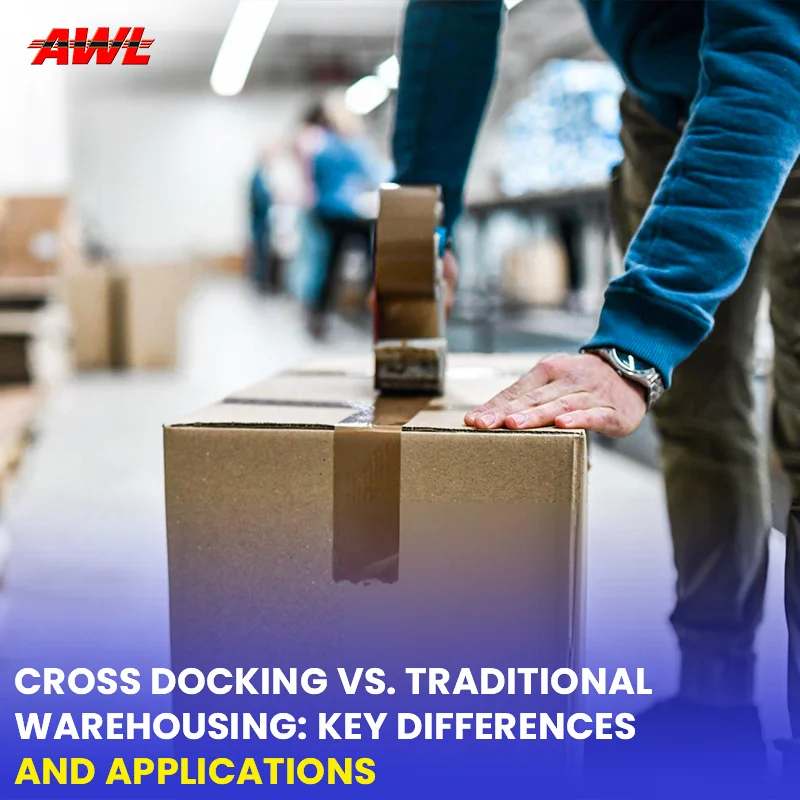

In the dynamic world of logistics, understanding the various methods of inventory management and storage is crucial for businesses looking to optimise their supply chains. Two prevalent strategies are cross docking and traditional warehousing. At AWL India, we pride ourselves on being one of the leading warehousing and logistics service providers in India, utilising innovative technologies like RFID to enhance our operations. This blog will explore the key differences between cross docking and traditional warehousing, highlighting their applications and benefits.
Cross docking is a logistics strategy that involves unloading goods from incoming vehicles directly onto outbound vehicles, with minimal to no storage time in between. This method streamlines the supply chain by reducing the need for warehousing and facilitating faster delivery to customers. In cross docking, products are received, sorted, and dispatched efficiently, enabling businesses to meet customer demands swiftly.
The main objective of cross docking in logistics management is to enhance efficiency by minimising storage costs and reducing lead times. It’s particularly beneficial for businesses that deal with high volumes of fast-moving goods, such as retail, groceries, and automotive parts.
Traditional warehousing, on the other hand, involves storing goods for an extended period before they are distributed to retailers or end consumers. Warehousing companies in India typically utilize this method to manage inventory levels, control stock, and ensure that products are available when needed. In traditional warehousing, products are received, stored, and later picked and packed for shipment.
While traditional warehousing is essential for managing slower-moving items or bulk storage, it often requires more time and resources. The costs associated with maintaining a physical storage space, including utilities, labour, and equipment, can be significant.
Understanding the key differences between cross docking and traditional warehousing is essential for businesses aiming to optimise their supply chains. Each method offers distinct advantages that can significantly impact operational efficiency and cost-effectiveness.
The most notable difference between cross docking and traditional warehousing is the duration of storage. In cross docking, goods spend minimal time at the facility—often just a few hours. This rapid turnover helps in reducing handling costs and enhances the speed of delivery. In contrast, traditional warehousing requires goods to be stored for days, weeks, or even months, depending on inventory management practices.
Cross docking tends to have lower operational costs compared to traditional warehousing. Since cross docking minimizes storage time, businesses save on rent, utilities, and labor costs associated with maintaining a warehouse. Traditional warehousing, however, incurs ongoing expenses related to long-term storage, making it more costly for companies that deal with high inventory turnover.
In cross docking, inventory levels are managed in real time, allowing for a more agile supply chain. Products are typically received based on immediate demand, which helps in reducing excess inventory and stockouts. Traditional warehousing relies on forecasting and safety stock, leading to potential overstocking or understocking, which can disrupt supply chain efficiency.
Cross docking provides greater flexibility to adapt to changes in demand. Businesses can quickly adjust their operations based on market conditions, enabling them to respond rapidly to customer needs. Traditional warehousing may lack this flexibility, as it often requires long-term planning and commitment to storage space.
Cross docking is ideal for high-velocity products that require quick turnovers, such as perishable items or fast-moving consumer goods. Conversely, traditional warehousing is better suited for slower-moving goods, large quantities, or items that may not be needed immediately, allowing for better inventory management and control.
Cross docking is increasingly popular across various industries, and its applications include:
Traditional warehousing remains essential for various businesses, particularly in sectors like:
At AWL India, we understand the unique needs of our clients and offer tailored solutions to fit their logistics requirements. As one of the leading warehousing companies in India, we provide both cross docking and traditional warehousing services, leveraging our expertise in logistics management to optimise our clients’ supply chains. Our state-of-the-art facilities are equipped with the latest RFID technology, allowing us to monitor inventory levels in real time and enhance operational efficiency.
Whether you’re looking to implement cross docking for quick product turnover or need traditional warehousing for longer-term storage, AWL India has the resources and expertise to support your business goals. Our commitment to quality service and innovative logistics solutions positions us as a trusted partner for businesses in various sectors.
Understanding the key differences between cross docking and traditional warehousing is essential for businesses looking to optimise their supply chain operations. By evaluating your specific needs and considering the benefits of each approach, you can make informed decisions that enhance efficiency and reduce costs. At AWL India, we are dedicated to providing top-notch cross docking and warehouse services to meet the diverse requirements of our clients, ensuring that your logistics operations are seamless and effective.

